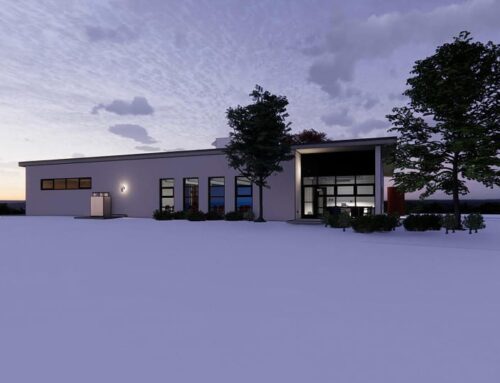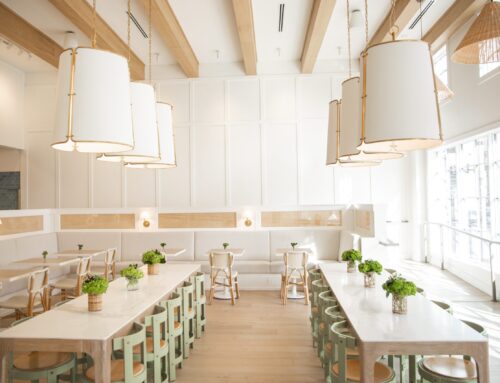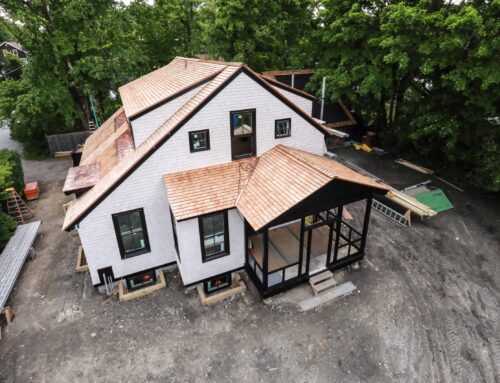1. Site Selection
Green building begins with the site that you choose. Building on land that is in a developed area, connected to main roads and electrical and water systems impacts the environment less than developing pristine land.
The way you position your home on the lot also makes a huge impact on the performance of your home. By minimizing the length of south and west facing sides of your home, you reduce the amount of thermal heat gain from the sun every day. This simple choice will save you thousands of dollars in cooling costs.
Site selection is also about preserving as much of the natural environment as possible. If there are trees on the property, hire a professional to make a tree preservation plan. This is environmentally beneficial, but it also increases the value of your home as the years go by and those trees become gorgeous canopied shade trees. Also, don’t cover your entire property with grass. Set aside natural areas that can be planted with an ecosystem.
2. Materials Choices
What your building materials are made of and where they come from are important in building a green home. Sustainable materials are easily regrown – like bamboo flooring and engineered wood products. Using either of these materials saves old growth trees. Reclaimed lumber that is used in beams or milled down for flooring is a “green” choice because you’re reusing something old. Making sure that the wood products you use came from well-managed forests instead of ones that were clear-cut is a responsible part of “green” building.
Recycled products are a part of green building, too. And before you wrinkle your nose imagining something like a door made from crushed aluminum cans, I’m talking about materials like steel. All steel has some amount of recycled content. Many ceramic tiles are made from a post industrial waste product. There are great carpets on the market that are made from recycled plastic bottles and you can’t tell the difference unless someone informs you. There are incredible countertops made from metal shavings on page 207. Also, using local materials is considered green because they don’t create added pollution due to transportation.
And VOCs. VOCs are volatile organic compounds; chemicals that produce unhealthy and even toxic vapors readily. Materials in your home that have VOCs are paint, carpet, caulk, sealant, and binding agents used in engineered wood. This is what you smell when you walk into a new home. For all of the materials that contain VOCs, there are choices on the market for products that don’t contain VOCs.
Energy Efficiency
Choosing heating and cooling systems, lighting and water heating systems that produce and deliver their product as efficiently as possible significantly reduce energy costs. These choices coupled with better insulation make your home more energy efficient for the LIFE of the home. Better windows are also a big contributor in creating an energy efficient home. See, simple.
3. Water Conservation
It doesn’t seem like a big problem in Nashville but water issues are going to be increasing in importance in the future. Installing intelligent water usage systems now prepares your home for potential water issues later as well as saving you money all along by decreasing your water usage from day one. You can accomplish this by using in-line water heating systems, plumbing your home using the best routes possible, insulating hot water pipes, using low flow faucets and shower heads, and incorporating creative solutions like capturing sink and shower water that is filtered and then used to flush your toilets.
4. Construction Waste Disposal
Building a typical home results in an average of 6 tons of construction waste. If you have a larger than average home, even more trash was generated in the construction process. Usually, all of this waste goes straight to a landfill even though most of it can be recycled! Often, the charges for recycling as opposed to landfilling are similar, but it does take vigilance to make sure that all the various subcontractors stick to the recycling plan. And your builder may not know who to call to set up an on-site recycling plan.
Materials that can be recycled are: scrap wood, metals, vinyl (especially PVC), asphalt shingles, cardboard, and drywall.
Once construction is over, you can continue the practice of recycling in your home. Make sure that you have enough garbage cans and storage areas for recycling. If you have a system, you’ll recycle. If you don’t have a system, you won’t. It’s that simple.
 5. Green Materials
5. Green Materials
Why is materials selection an important part of building a green home? All materials have some environmental cost associated with the extraction of the raw material, processing into the product itself, and transportation to its destination. Materials that cost the least in terms of environmental damage are considered “greener” materials.







Leave A Comment
You must be logged in to post a comment.